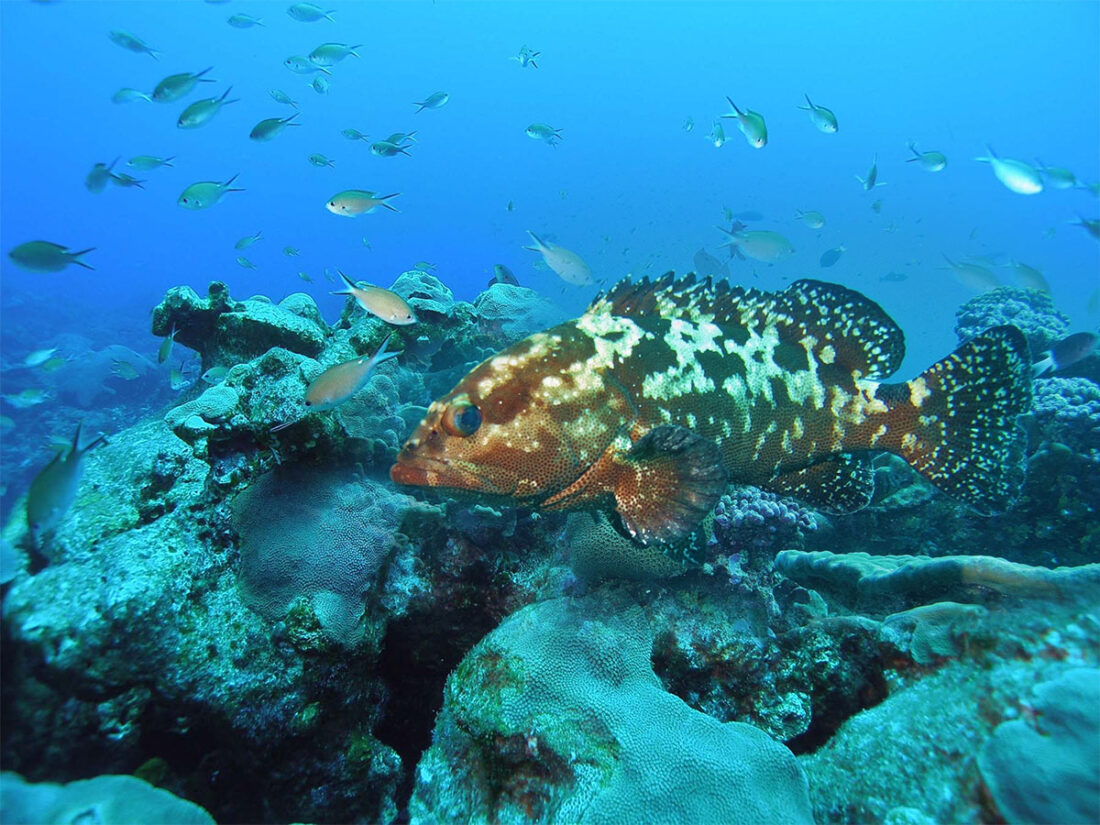A reef is a permanent structure that sits underwater and is made of coral or rock. Many different types of fish make their home in and around reefs. You may think reefs are only found in the deep sea, but you can also find them along coastlines and even in some lakes.
A reef is any solid structure, whether natural, such as a rock outcrop or oyster bed, or manmade, such as a jetty or shipwreck. Regardless of the nature of the reef, fishing near one will almost certainly increase your odds of catching a fish.
Here are some things to consider when fishing near a reef:
- Think about the fish you’re targeting. What are their habits? What do they like to eat? Fish that are predators, like red drum, amberjack, bluefish and striped bass, like to swim around the outside of the structure to see if they can find baitfish that have wandered too far from the protection of the reef. For these predatory fish, drop your bait into the structure, then reel it back to your boat, making it look like a baitfish that’s trying to escape.
- You’ll need to try a different tactic if you’re after saltwater fish that prefer to hang out deeper in the ocean, like grouper, triggerfish and blackfish. For these fish, you’ll want to drop your boat’s anchor when you are over the structure, then drop your baits straight down to the fish below. If you’re lucky enough to get a bite, you’ll need to keep steady pressure on the line to keep the fish from swimming back into the structure.
Reef Fishing Techniques
The best methods to use for reef fishing are jigging, bottom fishing and drift fishing. You’ll want to avoid anchoring near a living reef, if possible, so you don’t damage the structure. Any of the aforementioned methods will work well for bottom-feeding fish, such as amberjack, snapper, grouper, halibut and lingcod.
Another good method to use is trolling, which is better if you’re trying to catch fish that stick closer to the surface, like tuna, sailfish, barracuda and cobia. Sometimes, you’ll even catch grouper or snapper by trolling.
Chumming is another method that works well to lure fish to your boat. If you find yourself dealing with a strong tide, throw a good chum mix into the water and see what shows up. You should be able to attract anything from sharks to mangrove snapper.
If you happen to be in an area where it’s legal, spearfishing is also a popular option. With spearfishing, not only do you get to go diving, but you get to fish at the same time.
Reef Fishing Gear
If you decide to go reef fishing, make sure you bring a stout, heavy action fishing rod. You’ll want to make sure it has a free-spooling or spinning reel and that it’s able to hold a lot of heavy test line.
When choosing your line, keep in mind that reefs can be quite sharp. It’s ideal to use braided line, due to the fact that it stretches less than monofilament and is resistant to abrasion. For extra protection against the rough reef edges, you’ll want to have a 12- to 24-inch leader. If you plan to fish in saltwater, wire or nylon leaders are a good choice; however, if you’re fishing in freshwater, the preferred leader is one made of fluorocarbon because the fish can’t see it as well.
When it comes to which bait to use when reef fishing, live baits like shrimp, mullets, crabs and baitfish work the best – just make sure it’s fresh.
It takes time to get good at fishing over reefs. You need to think about things like the speed of the current and direction of the wind to give you the best advantage. If the water is shallow, it can be tough to safely navigate around reefs. It’s smart to hire a charter captain the first few times you try reef fishing so you can learn the best and safest methods to use.




